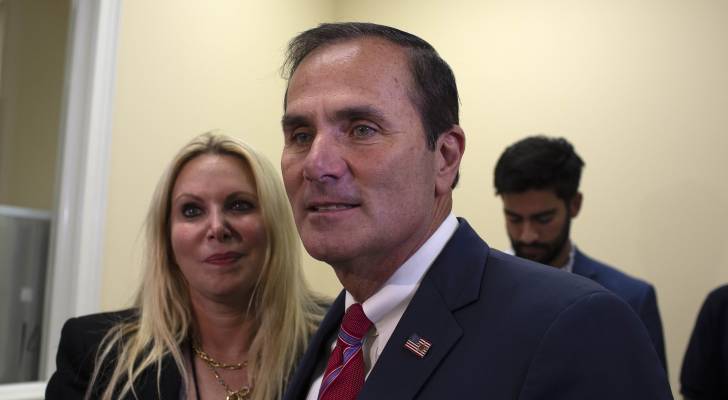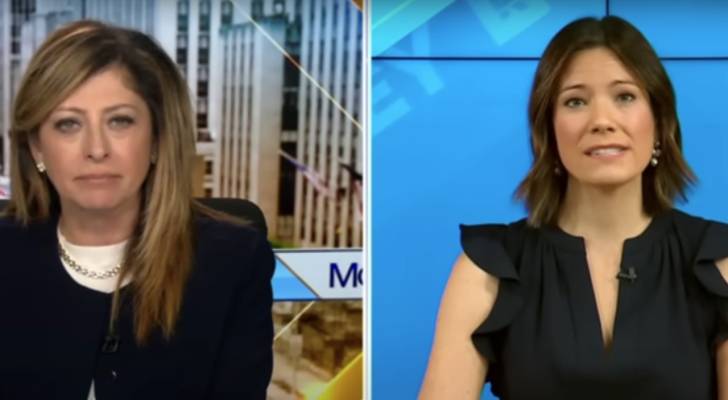‘It’s sad’: Florida’s condo fee crisis could trigger the ‘next wave of homeless people’ in the state, says one representative — with seniors on fixed incomes at highest risk


We adhere to strict standards of editorial integrity to help you make decisions with confidence. Some or all links contained within this article are paid links. A new building safety law that was passed in the wake of the Surfside tragedy in Florida has resulted in a tremendous amount of financial pressure on condo owners. […]
Jason Kelce says he lost ‘all my money’ in New Orleans at Super Bowl LIX — at one point it was a ‘bigger bloodbath’ than the Chiefs’ blowout loss. Here’s what happened and what you can learn


We adhere to strict standards of editorial integrity to help you make decisions with confidence. Some or all links contained within this article are paid links. Travis Kelce, along with the Kansas City Chiefs, suffered a crushing loss at Super Bowl LIX after being obliterated 40-22 by the Philadelphia Eagles. But his brother, Jason, also […]
I’m 65, have $120,000 saved, collect Social Security of $1,700/month — but monthly expenses total $3,900. How can I make sure money doesn’t run out without sacrificing lifestyle?
We adhere to strict standards of editorial integrity to help you make decisions with confidence. Some or all links contained within this article are paid links. At age 65, a $120,000 nest egg isn’t going to produce as much income as you might hope. Assuming you follow the 4% rule, you’ll only be able to […]
The No. 1 rule for becoming a millionaire in America, according to Maria Bartiromo and this Ramsey Show host — will you ignore or follow it in 2025?


We adhere to strict standards of editorial integrity to help you make decisions with confidence. Some or all links contained within this article are paid links. Many Americans dream of becoming a millionaire, and most think they’ll need to be one to retire comfortably. According to the 2024 Planning & Progress Study published by Northwestern […]
Author Robert Kiyosaki says there’s ‘nothing wrong’ with buying a house – except he uses debt to buy it and ‘pay no taxes’ — here are other ways to invest in real estate


We adhere to strict standards of editorial integrity to help you make decisions with confidence. Some or all links contained within this article are paid links. With elevated home prices these days, buying a house can be a significant challenge. But for “Rich Dad Poor Dad" author Robert Kiyosaki, it’s a breeze. During an interview […]
Trump’s Canada-Mexico 25% tariffs are now raising prices for car parts. Will your auto insurance increase, too?


We adhere to strict standards of editorial integrity to help you make decisions with confidence. Some or all links contained within this article are paid links. You may be aware that President Donald Trump’s global tariff war will see Americans paying more for consumer goods, but have you considered the cost of services will also […]
Mark Cuban said this will be the ‘No. 1 housing affordability issue’ for Americans — and predicts Florida will have ‘huge problems.’ How you can protect yourself in 2025


We adhere to strict standards of editorial integrity to help you make decisions with confidence. Some or all links contained within this article are paid links. There’s passionate debate about how to solve America’s ongoing housing crisis, much of which revolves around mortgage rates, zoning issues, immigration and construction. However, billionaire entrepreneur and investor Mark […]
‘We’re not robots’: As recession looms, Americans may be unsure about what to do with their 401(k) — here’s what experts recommend


We adhere to strict standards of editorial integrity to help you make decisions with confidence. Some or all links contained within this article are paid links. Since 1950, the US has weathered 11 recessions, proving time and again that downturns aren’t a question of if, but when. After a strong performance from the S&P 500 […]
‘You will pay more’: Dave Ramsey explains how Trump’s tariffs will impact Americans ‘on a personal level’ — says ‘there’s no question’ prices will go up. Here are 4 ways to help your wallet


We adhere to strict standards of editorial integrity to help you make decisions with confidence. Some or all links contained within this article are paid links. While global tensions rise and billion-dollar trade battles make headlines, Brianna from Washington, D.C., had a straightforward question for hosts of The Ramsey Show in a clip posted Feb. […]
This former minimum-wage worker retired at 39 with a $3.5M nest egg — now he’s an American expat living on $185K/year in Dubai. Here’s how he achieved freedom so early (and how you can too)


We adhere to strict standards of editorial integrity to help you make decisions with confidence. Some or all links contained within this article are paid links. Jamal Robinson didn’t come from money. He started at the bottom, working as a church janitor at 14 before landing a minimum-wage job at Taco Bell, working long shifts […]